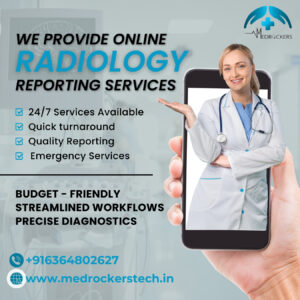Table of Contents
- Introduction
- Understanding Teleradiology
- Impact on Diagnostic Accuracy
- Best Practices in Teleradiology
- Advanced Technologies Enhancing Teleradiology
- Improvement Techniques for Teleradiology Services
- Overcoming Challenges in Teleradiology
- Conclusion
Introduction

How teleradiology enhances diagnostic accuracy has become a pivotal question in the evolving landscape of healthcare. As medical imaging technology advances, so too does the ability to deliver accurate diagnoses remotely. Teleradiology bridges the gap between radiologists and patients, providing timely and reliable interpretations of medical images. In this article, we will explore the best practices and improvement techniques that contribute to the efficacy of teleradiology services.
Understanding Teleradiology
Teleradiology refers to the transmission of radiological images from one location to another for interpretation and consultation. This technology enables healthcare providers to access expert radiologists remotely, ensuring that patients receive accurate diagnoses without delays. The essence of teleradiology lies in its ability to provide immediate access to specialists, particularly in underserved or rural areas where medical resources may be limited.
Impact on Diagnostic Accuracy

One of the key benefits of teleradiology is its significant impact on diagnostic accuracy. By utilizing best practices in image acquisition and transmission, healthcare providers can ensure that radiologists receive high-quality images for analysis. Studies have shown that timely access to expert radiological interpretation can lead to improved patient outcomes and reduced diagnostic errors.
How Teleradiology Enhances Diagnostic Accuracy
How teleradiology enhances diagnostic accuracy is rooted in the following factors:
- Immediate Access to Specialists: Quick consultation with radiologists reduces the time from imaging to diagnosis, which is crucial in acute cases.
- Collaboration and Second Opinions: Teleradiology enables collaborative efforts among radiologists, allowing for second opinions and more comprehensive evaluations.
- Continuous Monitoring: Remote monitoring of patients’ conditions can help in the early detection of changes that require immediate attention.
Best Practices in Teleradiology

To maximize the effectiveness of teleradiology, healthcare organizations must implement best practices that facilitate accurate diagnostics. Here are some essential strategies:
- Standardized Protocols: Establishing standard imaging protocols ensures that all images are captured consistently, enhancing the quality and reliability of the data sent to radiologists.
- Robust IT Infrastructure: A reliable and secure IT infrastructure is essential for the smooth transmission of images and data, safeguarding patient information while optimizing workflow.
- Regular Training: Ongoing education and training for staff involved in the teleradiology process help maintain high standards of practice and keep pace with technological advancements.
Importance of Communication
Effective communication is another best practice that cannot be overlooked. Radiologists and referring physicians must maintain open lines of communication to clarify any uncertainties regarding image interpretation. Utilizing secure messaging platforms can facilitate prompt discussions, leading to better-informed decisions and improved diagnostic accuracy.
Advanced Technologies Enhancing Teleradiology

Recent advancements in technology have revolutionized how teleradiology operates. Here are some cutting-edge tools that enhance how teleradiology enhances diagnostic accuracy:
- AI and Machine Learning: These technologies assist in preliminary image analysis, flagging potential issues for radiologists to review. This not only speeds up the diagnostic process but also helps reduce human error.
- Cloud-Based Solutions: Cloud technology enables secure storage and sharing of medical images, allowing radiologists to access data from anywhere in the world.
- Telehealth Integration: Combining teleradiology with telehealth services enhances patient care by providing holistic support that includes direct communication between radiologists and referring physicians.
Improvement Techniques for Teleradiology Services

To continuously improve teleradiology services, healthcare providers can adopt the following improvement techniques:
- Feedback Mechanisms: Implementing feedback loops allows radiologists and referring physicians to communicate about the accuracy of diagnoses and areas for improvement.
- Performance Metrics: Tracking diagnostic accuracy rates and turnaround times can identify bottlenecks in the process and highlight areas needing attention.
- Patient Engagement: Educating patients about the teleradiology process can enhance their understanding and acceptance, contributing to overall satisfaction.
Integrating Patient Data
Moreover, integrating patient data from electronic health records (EHR) with teleradiology systems can enhance how teleradiology enhances diagnostic accuracy. This integration provides radiologists with comprehensive patient histories, enabling them to consider underlying conditions that might affect diagnostic interpretations.
Overcoming Challenges in Teleradiology
While teleradiology offers numerous benefits, it also presents challenges. Addressing these issues is essential for maintaining high standards of care. Some common challenges include:
- Data Security: Ensuring patient data security is paramount, as breaches can undermine trust in the system.
- Technological Barriers: Not all healthcare facilities have the same level of access to advanced technologies, which can hinder service delivery.
- Regulatory Compliance: Navigating the regulatory landscape for telehealth services can be complex, requiring ongoing diligence to ensure compliance with laws such as HIPAA.
Addressing Resistance to Change
Furthermore, healthcare providers may encounter resistance from staff when implementing teleradiology systems. It is vital to address this by demonstrating the benefits of teleradiology through training sessions and showcasing successful case studies that emphasize improved patient outcomes.
Conclusion

Contact for teleradiology services
In conclusion, understanding how teleradiology enhances diagnostic accuracy is crucial for healthcare professionals seeking to improve patient care. By adhering to best practices, leveraging advanced technologies, and employing continuous improvement techniques, organizations can optimize their teleradiology services. The future of teleradiology holds great promise, with the potential to revolutionize how diagnoses are made and patient care is delivered.

